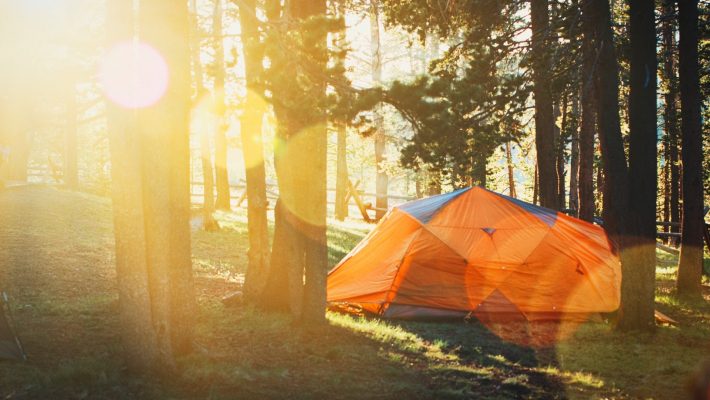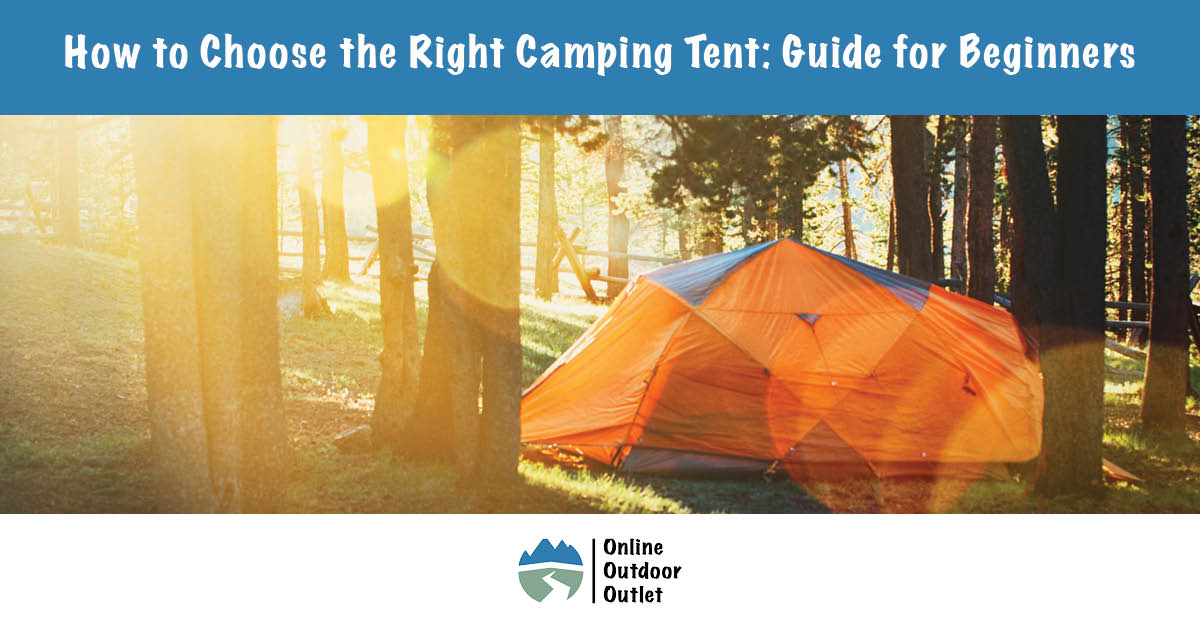A tent is perhaps the most important item on any outdoor getaway, and it is fit to say that you can judge a camper by their choice of tent. Unlike other outdoor gear, your tent represents the type of person you are and is a safe haven from the harsh elements. As a beginner or even experienced camper, it is important to choose the Best Camping Tent for your situation. In this guide, we will be discussing everything you need to check out before buying a tent, what types of tents are available, and what would be the perfect tent for you.

A tent provides you the safety at night when everything in the woods takes on an eerie vibe. And of course, as many countless horror films have proved the scary stuff can’t get you in the tent. That’s why it is important to pick out the right tent to be your home whether you are backpacking, hiking, or camping as a beginner. In this blog post, we will be looking at the best tents for all types of weather and for families, groups, mountaineers, and backpackers.
Season Rating
Camping tents typically come in three or four seasons with some hybrids in between. Most three-season tents will offer protection down to 32 degrees Fahrenheit while some four-season tents will provide warmth and protection into the negative temperatures.
3 Season Tents
This is one of the most picked types of tents due to their lightweight. These tents can withstand summer, spring, and fall. They are perfect for most people and can survive all expected weather conditions during these months.
A three-season tent is a perfect mix of affordability and value for money, it will keep all the bugs out, provide you privacy, shelter you from light snowfall, and mild storms. A three-season tent is one of the best tent choices for families.
Below are our Favorite Three Season Camping Tents:

Hybrid Season Tents
These tents are made for 3 seasons, but can also survive expeditions in late fall during moderate snowfall. They provide a perfect balance of strength, warmth, and ventilation. Hybrid tents have more poles than your average tent, but fewer ventilation panels. They are recommended for backpackers, and survival enthusiasts. While they are not as sturdy as a 4 season tent, they make up for it as they are lighter and easy to carry around.
Below are our Favorite Hybrid Season Camping Tents:

4-Season Tents
These tents are the toughest of the bunch, they are rated for all four seasons and rest assured will survive harsh weather like a breeze. They can be used during heavy snowfall, and retain warmth effectively. These have more poles than Hybrid and Three Season Tents, have no or very few ventilation panels, and always are heavier than other tents. These tents come in dome-shaped designs and are the best for mountaineering.
Below are our Favorite Four Season camping tents:

Camping Tent Capacity
While there are a lot of options for tent capacity, the very important thing that beginners don’t understand is that there is no official industry standard fixed for per person dimensions in a tent. So it is possible that a single-person tent might be too small for you. Or a six-man tent may only fit 3 adults with all of their camping gear.
It is recommended to always consider your group/family size, and choose a tent rated for one more person than that. It can be very uncomfortable living in a cramped space, and we always recommend buying a 2 person tent over a single-person tent.
You should always consider if the people you are staying with are:
- Larger than an average person?
- Claustrophobic or not?
- Notorious for shifting around a lot at night?
- Bringing some additional gear?
- Accompanied by a pet or child?
Based on these you should add more capacity, or know when you have the right fit.
Other Items to Consider when Buying a Tent for Camping
Camping Tent Height:
The Tent Height of the tent ceiling is also a very important choice, for people who like to stand up or have jumpy kids accompanying them might want to go for a higher ceiling.
Cabin Tents:
Cabin Tents offer 80 degrees sloped high walls to maximize the ceiling space, they are the best choice for families. Some cabin tents feature dividers and doors inside, which act as rooms for children.
Dome Tents:
Dome Tents are not as roomy as cabin tents as the ceiling is higher in the middle and slants down towards the edges. The upside to this design is that they are tougher and offer better protection against storms. These are good options for people buying tents for rougher climates.
Tent Floor Length:
If you are over 5’10, it is always a good idea to get a tent that features a floor length of 90 inches minimum.
Tent Doors:
The number and orientation of doors mainly come down to how many people you will be sharing the tent with. A good family cabin tent will have at least 2 doors so you don’t have to climb over each other to get in or get out.
Tent Zippers:
When buying a tent it is a good idea to check the Tent Door Zippers to see if they’re studying and how much noise they make while opening.
Tent Poles:
A general rule of thumb is the more poles a tent has, the harder it will be to pitch. That is why most 3 season tents use fewer poles. That makes them the best choice for beginners. They are easy to set up, pack and fewer poles mean they are lighter. However, poles are also necessary for strength. When buying a tent, it is a good idea to buy color-coded poles, made of aluminum instead of fiberglass.
Tent Rainfly:
A rainfly is like a special zed tarp to cover the roof of your tent to prevent leakage. These are great to use in rain or storms and can easily be tucked away when not needed. A roof-only rainfly provides mild protection against heavy storms, whereas a full tent rainfly offers the best protection against storms.
Tent Fabric:
Tents are available in a variety of fabrics and materials; while choosing a tent is a good idea to check how many seams the tent has, and how much the material denies moisture leakage. A good rule of thumb is to find one will fewer seams, and if you live in a particularly rainy climate invest in a premium rainfly.
Tent Ventilation:
The more mesh panels a tent has, the better ventilation it will have. It is as easy as that! If you live in a hot, or humid region mesh panels are a must-have. These will also provide moderate protection from bugs but are not very good at stopping fine sand.
Tent Interior Loops and Pockets:
Interior loops are a great way to keep your food and other important items off the ground. They can be attached to walls to offer more storage. You should always go for more loops if you are staying with family or friends. A central roof lantern loop is also a great way to keep your tent well lit up. A good rule of thumb is to find a tent with enough interior pockets for everyone using the tent.
Tent Outer Tent Loops:
If you are going to be staying in windy places, outer tent loops are a great way to prevent your tent from flapping like a bird. These will allow you to peacefully sleep at night regardless of the wind conditions. Outer loops are also a great choice for storing muddy boots, and other items that you don’t want to bring inside your tent.
Best Camping Tent Conclusion
That is a lot of information! Who knew so many decisions needed to be made when choosing the right camping tent for your next adventure. Make sure to follow online outdoor outlet on all of our social channels for weekly updates!
All Products in this blog can be found on Amazon.

